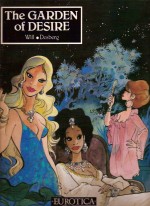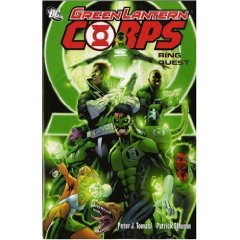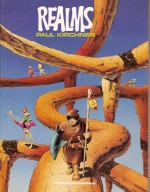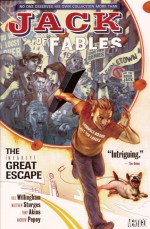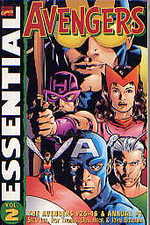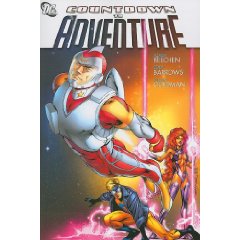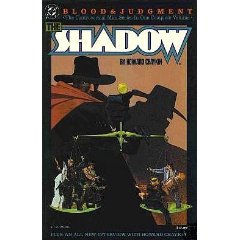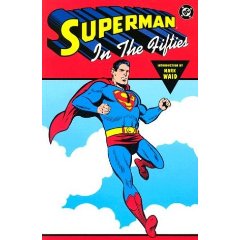
By various (DC Comics)
ISBN13: 978-1-56389-826-6
Part of a series of trade paperbacks intended to define DC’s top heroes through the decades (the other being Batman, of course) these books always deliver an unbeatable dollop of comicbook magic and a tantalising whiff of other, arguably better, times. They’re divided into sections partitioned by cover galleries, and this second volume of comic cuts begins (after an introduction by the ever informative Mark Waid) with “Classic Tales” culled from the period when the Superman TV show propelled the Man of Tomorrow to even greater levels of popularity.
Leading off is ‘Three Supermen from Krypton!’ written by William Woolfolk and illustrated by Al Plastino (one of a talented triumvirate who absolutely defined the hero during this decade). From Superman #65, (July-August 1950) this classy clash revealed more about Superman’s vanished homeworld whilst providing the increasingly untouchable champion with a much needed physical challenge.
Outer Space provided another daunting threat in ‘The Menace from the Stars!’ (World’s Finest Comics #68, January-February 1954). However all is not as it seems in this quirky mystery by a now unknown writer and the exceptional art team of Wayne Boring (another of the triumvirate) and inker Stan Kaye.
‘The Girl Who Didn’t Believe in Superman!’ by Bill Finger, Boring and Kaye, is a fanciful, evocative human interest tale typical of the times and sorely missed in these modern, adrenaline-drenched days. It originally appeared in Superman #96, cover-dated March 1955. From the very next issue came the canonical landmark ‘Superboy’s Last Day in Smallville!’ (by Jerry Coleman, Boring and Kaye) which revealed that particular rite of passage by way of exposing a crook’s long-delayed master-plan.
The first section ends with a tale from one of the many spin-off titles of the period – and one that gives many 21st century readers a few uncontrollable qualms of conscience. Superman’s Girlfriend, Lois Lane was one of precious few titles with a female lead, but her character ranged crazily from man-hungry, unscrupulous bitch through ditzy simpleton to indomitable and brilliant heroine – often all in the same issue.
Most stories were played for laughs in a patriarchal, parochial manner; a “gosh, aren’t women funny?” tone that appals me today – but not as much as the fact that I still love them to bits. It helps that they’re all so very well illustrated by the wonderfully whimsical Kurt Schaffenberger. This one, ‘The Ugly Superman!’ (#8, April 1959), deals with a costumed wrestler who falls for Lois, giving the Caped Kryptonian another chance for some pretty unpleasant Super-teasing. It was written by the veteran Robert Bernstein, who unlike me can use the tenor of the times as his excuse.
As the franchise expanded, so did the cast and internal history. The second section is dedicated to our hero’s extended family and leads with ‘Superman’s Big Brother’ by famed pulp writer Edmond Hamilton and Plastino, (Superman #80, January-February 1953) wherein a wandering alien is mistaken for the aforementioned sibling, followed here by the introduction of a genuine family member in ‘The Super-Dog from Krypton!’ which originally saw print in Adventure Comics #210, March 1955.
Here Otto Binder and Curt Swan (the third of three and eventually the most prolific Super-artist of all time), aided by inker John Fischetti, reveal how baby Kal-El’s pet pooch escaped his home-world’s destruction and made his way to Earth.
Another popular animal guest-star was ‘Titano the Super-Ape!’ a giant ape with kryptonite vision, and this tale (from Superman #127, February 1959) is still one of the best Binder, Boring or Kaye ever worked on, combining action, pathos and drama to superb effect. This section ends with the inevitable landmark which more than any other moved Superman from his timeless Golden Age holdover status to become a part of the DC Silver Age revival. ‘The Supergirl from Krypton!’ introduced the Man of Steel’s cousin Kara Zor-El (Action Comics #252, (May, 1959) in a captivating tale by Binder and Plastino.
There had been numerous prototypes (one was included in the previous volume of this series, Superman in the Forties, ISBN: 978-1-4012-0457-0) but this time the concept struck home and the teenaged refugee began her long career as a solo-star from the very next issue.
Section three highlights “the villains” and leads with a rarely seen team-up of The Prankster, Lex Luthor and that extra-dimensional sprite Mr. Mxyztplk in ‘Superman’s Super-Magic Show!’ by Hamilton, Boring and Kaye (Action Comics #151, December, 1950) – tale more of mirthful mystery than menace and mayhem. It’s followed by the still-impressive introduction of alien marauder Brainiac in ‘The Super-Duel in Space’ by Binder and Plastino, from Action Comics #242, (July, 1958) and ‘The Battle with Bizarro!’ from Action Comics #254, (July, 1959) by the same creative team. This story actually re-introduced the imperfect duplicate, who had initially appeared in a well-received Superboy story (#68, from the previous year). Even way back then sales trumped death…
So popular was the character that the tale was continued over two issues, concluding with ‘The Bride of Bizarro!’ (Action Comics #255, August 1959), an almost unheard of luxury back then.
The fourth and final section is dedicated to “Superman’s Pals” and stems once more from that epochal television show, which made most of the supporting cast into household names. ‘The End of the Planet!’ by Hamilton and Plastino, Superman #79 (November-December 1959) is actually about the famous newspaper’s imminent closure rather than a global threat, whilst ‘Superman and Robin!’ is a classic bait-and-switch teaser from World’s Finest Comics #75 (March-April 1955), and Finger, Swan and Kaye knew that no-one believed that they had really broken-up the Batman/Boy Wonder team….
Superman’s Pal Jimmy Olsen also had his own comicbook, and ‘The Stolen Superman Signal’ (#13, June 1956, by Binder, Swan and Ray Burnley) perfectly displays the pluck and whimsy that distinguished the early stories. The last tale in this section – and the volume – is from Showcase #9 (June-July 1957) the first of two Lois Lane try-out issues. ‘The girl in Superman’s Past!’ by Coleman, Ruben Moreira and Plastino introduced an adult Lana Lang as a rival for superman’s affections and began the sparring that led to many a comic-book cat-fight…
Including an extensive cover gallery, text features and a comprehensive creator-profiles section, this is a wonderful slice of comics history, refreshing, comforting and compelling. Any fan or newcomer will delight in this primer into the ultimate icon of Truth Justice and The American Way.
© 1950-1959, 2002 DC Comics. All Rights Reserved.


